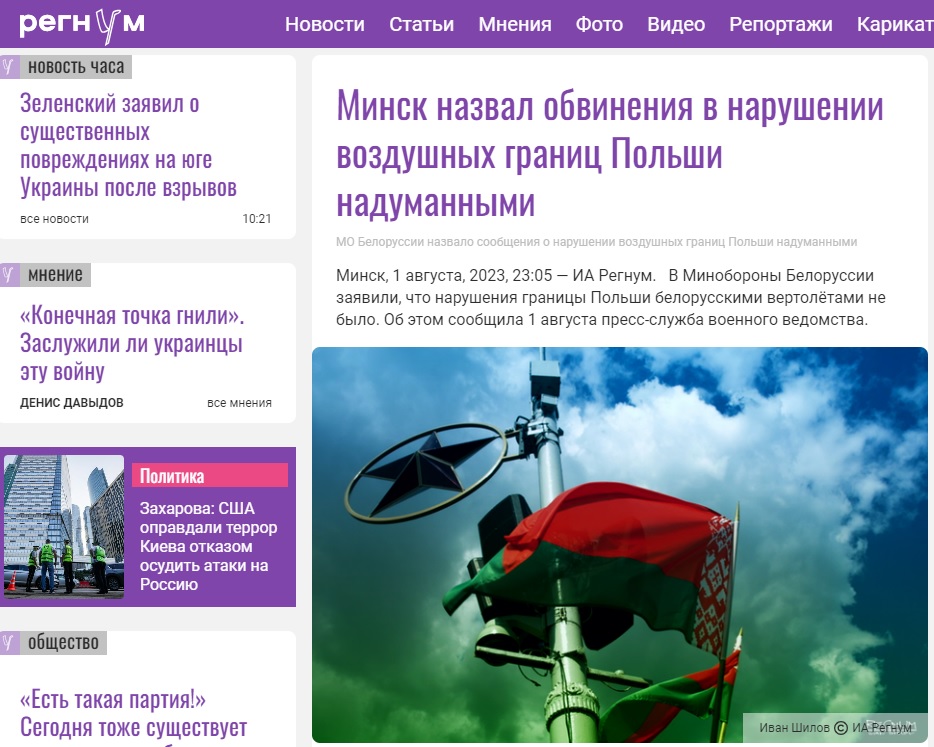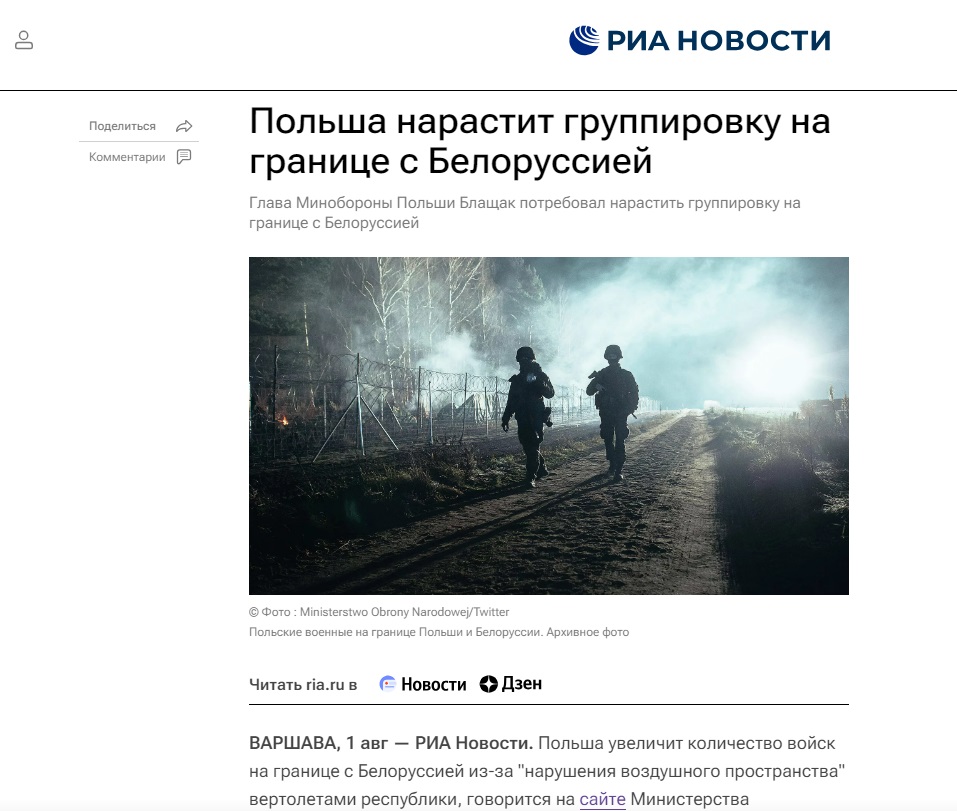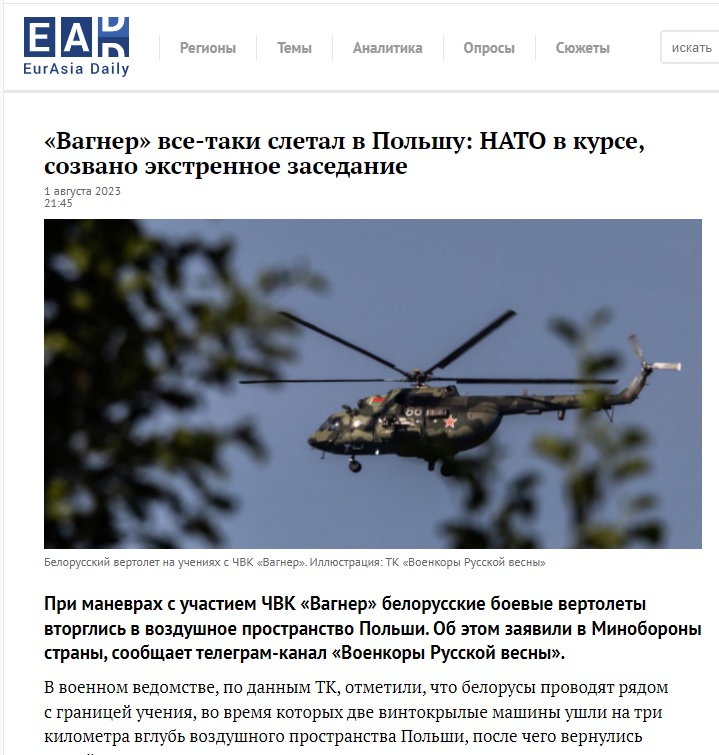As a result of the violation of the Polish airspace by two Belarusian helicopters, the Belarusian and Russian sides have focused their disinformation activities on using this issue to strengthen their previous activities in the information field. Judging by way of communication, it is highly likely that the given event was a planned provocation, which fits into the context of influence operations that have been conducted against Poland for many months.
In this particular context, the narratives from Minsk and Moscow have been centred around a few misleading directions.
Firstly, the given event was presented as a “Polish invention”, suggesting that we are dealing with a “Polish provocation”. The given action aimed at whitewashing the image of Minsk by denying the fact Belarusian military helicopters entered the airspace of a neighbouring country.
Secondly, the event was presented as “Polish fake news” serving Warsaw’s agenda, which will be used by the Polish government to justify the need to “militarise” eastern Poland. The narration reduces the given event to the element of “Polish disinformation activities” aimed at covering up and justifying allegedly ongoing preparations for an attack on Belarus (the matter concerns, among other things, the narrative about Poland’s plans to provoke a war with Russia).
Thirdly, the discussed event was placed in the context of activities aimed at intimidating Poles with the spectre of an attack from the mythologised “Wagnerites”. For this purpose, sources related to the Foreign Intelligence Service of the Fed. Russian sources have published materials confirming the appearance of Belarusian helicopters in Polish airspace,emphasising that the event was related to exercises involving the so-called “Wagner Group”. This was a form of suggestion that the members of the mentioned Russian structure (de facto subordinate to Moscow – created as independent from the Russian state authorities) fulfilled their promises regarding the invasion of the territory of the Republic of Poland. It is worth mentioning here that in this way, the Russians negated the previously mentioned narratives (however, this narrative was not circulated by key/leading Russian media – perhaps its goal was to penetrate the Polish infosphere rather than to influence Russians).
In the general picture of reality shaped by Minsk and Moscow, the discussed event served as “evidence” of Warsaw’s aggressive actions and was an “example” of the “disinformation character” of Polish state institutions. In the distorted vision of reality created by the Russians and Belarusians, Poland once again revealed its “true” face through the “preparation of provocations” and the “unfounded accusation” of Belarus of hostile intentions. Misinformation campaigns related to the discussed event are framed within the context of portraying Poland as a threat to Belarus and the party responsible for escalating tensions in the region.
Author: dr Michał Marek
Public task financed by the Ministry of Foreign Affairs of the Republic of Poland within thegrant comp etition “Public Diplomacy 2023”
Fot. Getty Images via Money.pl




